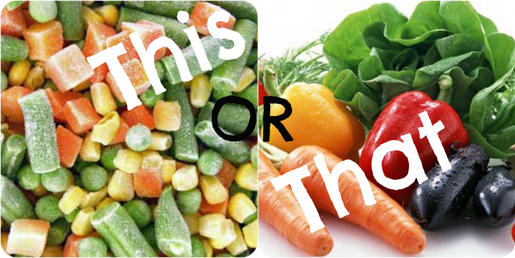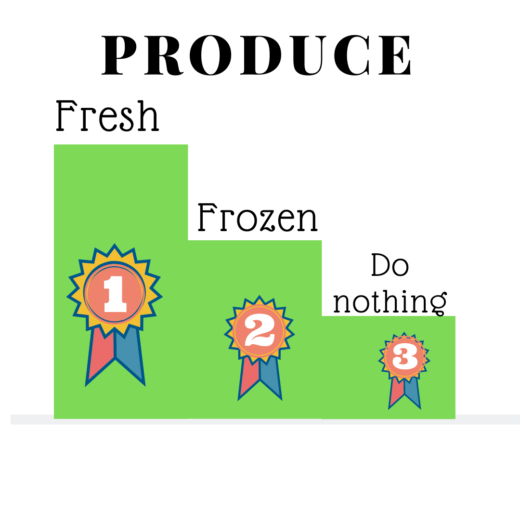


Freezing is one of the oldest and most widely used methods of food preservation, which allows preservation of taste, texture, and nutritional value in foods better than any other method.
The freezing process is a combination of the beneficial effects of low temperatures at which microorganisms cannot grow, chemical reactions are reduced, and cellular metabolic reactions are delayed.
The safety and nutrition quality of frozen products are emphasized when high quality raw materials are used, good manufacturing practices are employed in the preservation process, and the products are kept in accordance with specified temperatures.
Following the freezing operation, frozen products are maintained in frozen storage, which is also an important step in the quality retention of frozen food products.
During frozen storage, the amount of ice in the system generally remains constant for any given temperature, where the number of ice crystals decreases due to increase in average crystal size.
Fluctuations in storage temperature and temperature gradient within the product cause moisture migration, relocating the water within the product and undesirable recrystalization which may affect texture and general quality.
Therefore, it is important to maintain and monitor the efficiency of frozen storage for retention of high quality within the frozen products. Most vegetables will maintain a high quality for 12 to 18 months at -18 °C or lower.
Main changes to frozen foods during storage are degradation of pigments, loss of water soluble vitamins at sub freezing temperatures, residual enzyme activity by polyphenoloxidase, lipoxygenase and off flavour developed due to oxidation of lipids.
A study showed that frozen vegetables provided 30–50% less of antioxidants with respect to fresh vegetables. Blanching is a mild heat treatment, accomplished with hot water, steam, hot air, or microwave, which may result in nutrient losses.
For instance, 72% of the phenol concentration is lost in the florets and 43% in the stems by boiling broccoli for 5 min. The retained antioxidant activity measured by 2,2-diphenyl-1-picrylhydrazyl (DPPH) method was about 35%, both in the florets and in the stems; by microwaving, the retained phenols were the same as by boiling.
The conducted studies showed that frozen broccoli and green beans were good folate sources and its content after thawing was at the level of 129.3 and 91.1 μg 100g–1, respectively.
In case of frozen broccoli stored at 2oC and 8oC up to 7 days, the significant folate loss of 20% was observed after 3 days at 2oC. The highest decrease of 30%, was noticed after 7 days at 8oC, while after the same time at 2oC, the loss didn’t exceed 20%.
In green beans significant folate loss of 10% was observed after 1 day at 2oC and almost 20% at 8oC. Folate decrease during storage for 3 and 7 days remained at the level of 20% and was not significantly different to the loss noticed after 1 day at 8oC.
Studies also observed the loss of vitamin C in frozen vegetables (38.2% for green beans, 36.2% for spinach, 29% for green peas and 51% for broccoli compared to fresh produce.
Probably, the loss of vitamin C in frozen products is caused mainly by the treatment preceding freezing, i.e. blanching, which involves a brief thermal treatment of the material with water or steam usually at a temperature of 80–95°C (mainly on the surface), followed by immediate cooling down to approx. 15–20°C.

NOTE WHILE PURCHASING AND COOKING FROZEN VEGETABLES
1) While buying give the bag of veggies a few good squeezes to see if they’re clumped together. “If they are, this means they thawed and refroze somewhere along their journey to the store and lost nutrients in that process,” Do not buy it.
2) If you’re making something warm that can handle a little extra moisture the vegetable can likely be tossed in frozen. If you’re eating it raw (like in the corn salad above) or you want to avoid excess moisture (such as on top of a pizza), you’ll want to thaw.
3) Frozen vegetables often cook more quickly than their fresh counterparts. Frozen broccoli, cauliflower, and carrots, for example, aren’t as firm as fresh, so you can cut the cook time in half if you’re roasting or stir-frying. If you’re adding frozen vegetables to soups, stir them in during the last few minutes of cooking.
4) Using only frozen or only fresh, but not a mixture of both.
5) Frozen peas should roll out of the bag or box like marbles, not stick together in a clump.
6) Adding frozen veggies to a dish later in the cooking process. When adding them to soups and stews in a slow cooker, for example, add them during the last few minutes of cooking to retain texture and color, Shepherd said.
7) Moist heat methods of cooking, such as microwaving and boiling, have a reputation for turning frozen veggies into a soggy mess, recommend sautéing, frying or roasting them instead.
8) The recommended shelf life of frozen vegetables is 8 to 12 months, but using them even sooner helps ensure that they’ll look, feel and taste as close to fresh as possible.
9) Removing the rest of the frozen veggies from their original storage bag and transferring them to a Ziploc freezer bag — that way, you can press out as much excess air as possible and securely seal them up.
Ryan Fernando is an Award-winning celebrity Sports Nutritionist with 2GUINNESS world record and 2 Olympic medals under his belt. His client list include Olympic wrestler Sushil Kumar, cricketer Shikhar Dhawan & bollywood superstars Aamir Khan & Abhishek Bachchan. He is Chief Nutritionist at QUA Nutrition Signature Clinics.
©2023 All Rights Reserved Ryan Fernando. Designed and Developed by Floral Web Services